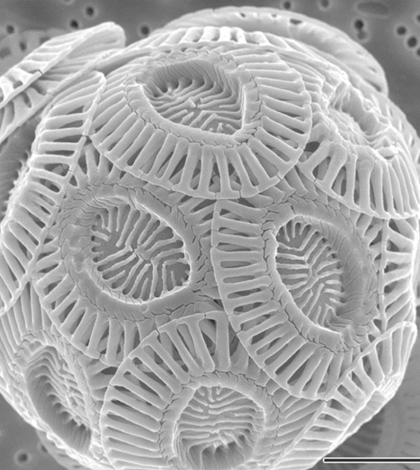Ocean acidification taking a toll on important shell-building phytoplankton

Micrograph of a single Emiliania huxleyi coccolithophore cell. (Credit: Alison R. Taylor / University of North Carolina Wilmington Microscopy Facility/CC BY 2.5)
Satellite and ship data show that an important shell-building phytoplankton has been in decline all over the world, according to a recent press release from the University of Colorado at Boulder.
The decline of E. huxleyi, one of the most common phytoplankton and an organism crucial to the global food web, has largely been blamed on ocean acidification.
A decline of 24 percent over a 17 years in the Southern Ocean surrounding Antarctica was especially critical. Researchers believe the effects of acidification on the phytoplankton were exacerbated by ocean warming, also caused by human activity.
Satellite data in the study was unique, measuring calcium carbonate levels and calcification rates in the ocean. Carbonate ion concentration in the ocean is directly related to the shell-building activities of phytoplankton: The fewer healthy phytoplankton there are, the lower the carbonate ion numbers.
The Southern Ocean is especially susceptible to pollution, absorbing more carbon than most oceans. It also has a naturally low base level of carbonate ions, exacerbating the effects of ocean acidification.
Top image: Micrograph of a single Emiliania huxleyi coccolithophore cell. (Credit: Alison R. Taylor / University of North Carolina Wilmington Microscopy Facility/CC BY 2.5)




0 comments